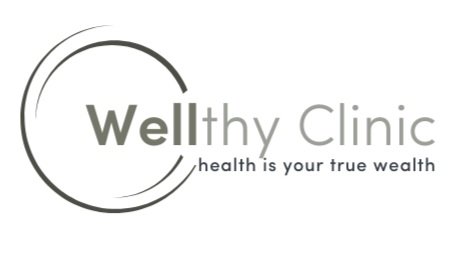Rehab Pilates in London
It’s frustrating and painful getting injured. You then can experience further frustration with the mixed messages and advice on what is best to do and who is best to see to feel better quicker. You may have given some home exercises that don’t seem to work. Your colleague suggested a massage which didn’t help, so your friend suggested Pilates might be worth trying. So here you are, researching. We believe we can help you, and we are both Osteopaths and Pilates Instructors with a wealth of knowledge and experience to support your recovery. Big fans of positive functional movements and are passionate about helping others. We have produced this article to hopefully answer some questions and discuss how rehab Pilates can help you and your recovery.
What is rehabilitative Pilates?
Exercises that aim to strengthen the weaker areas of your body to promote balance. It focuses on increasing function, strength and dynamic stability throughout the body. It works on the deeper postural muscles to strengthen from the inside out, giving you a stronger foundation to support more challenging movements. Rehabilitation after a sports injury also stretches your whole body to increase the functionality of your movement.
Why is It suitable for rehabilitation?
It’s fantastic as you will address your muscular imbalances, flexibility and balance in a low-impact practical way to optimise your injury rehabilitation. The rehab will be graded to ensure progression and to achieve your goals.
Is It an effective rehabilitation tool?
Yes, it’s essential to keep moving when you are injured BUT in a low-impact way and with structure. The old-school attitude that you must keep resting when injured is not helpful. Stasis is detrimental to your health. Having a Pilates rehab plan to increase your strength, stability and flexibility progressively will optimise your recovery. A recent systemic review has suggested it is an effective rehabilitation tool for pain and disability. It’s fantastic as it can take you from the early stages of rehab to having a well-conditioned and fully functioning body. Online Pilates Classes offers another option if you’re travelling but would like to keep up the consistency.
Is It Good for muscle pain?
Low-impact strengthening and stretching exercises (or exercises that don’t overstress the injured muscle) help reduce pain perception. Studies have suggested exercise has been found to reduce neuropathic pain by reducing inflammatory chemicals that trigger pain (Byrnes et al., 2018). Educating patients on the importance of meaningful movement greatly helps their muscles, thoughts, and feelings about their injury. Indeed, it’s for much more than just muscle pain 10 Benefits of Pilates.
What part of the body does Pilates work?
Having a flexible form of rehab is critical to gaining the desired results. It will work the whole body, but you will always work your powerhouse muscles within a session. Your powerhouse muscles consist of the core, lower back muscles, diaphragm and pelvic floor. Strengthening these deep postural muscles will give you a solid foundation to support your rehab, everyday life and, indeed, more demanding exercises.
Is Rehab Pilates good for injury?
Absolutely yes rehab Pilates is good for injuries; given the low-impact nature, you are exercising in a safe manner that is less likely to flare up your symptoms. Post-injury rehab exercise is vital to encourage circulation, reduce inflammation and optimise healing. A randomised controlled trial suggested equipment Reformer Pilates for low back pain were more effective for disability and Kinesiophobia scores. This was after a six-month follow-up compared to mat work for patients with chronic nonspecific low back pain.
Is It good for shoulder pain?
Yes, increasing upper back and shoulder mobility through low-impact exercises can be highly beneficial. Shoulders are tricky as there is designed for mobility, not stability, so they can easily be injured, especially with racquet sports, weightlifting and even post-shower drying off. You can also have referred shoulder pain, so it’s essential to see a shoulder pain expert to manage your recovery effectively. We find the combination of hands-on Osteopathy and rehab Pilates works well.
What’s the difference between Pilates and Conventional exercise for rehabilitation?
Conventional exercise may be too strenuous for you and may not focus on the importance of technique to increase effectiveness and efficiency. To have a structured rehab plan, we need to answer how and why did you experience the injury in the first place. We would address areas we need to address to get you feeling better and then reduce the chance of future injury re-occurrence. We have worked with many patients over the years and take great pleasure when you start liking and loving it! You recognise and appreciate the benefits and very much ‘get it.’
Is Rehab Pilates the same as Physiotherapy?
No, rehab Pilates is not the same as Physiotherapy, although there is some overlap between rehabilitation exercises given by a Physiotherapist and Pilates instructors; they are not the same. At Wellthy Clinic, we are Osteopaths and Pilates Instructors, so we have a depth of knowledge to make your sessions as efficient and enjoyable as possible. A Physiotherapist or Osteopath who has conducted additional training will have detailed knowledge to support a client through a rehab plan.
Can It Help prevent injuries?
Yes, we believe so, developing your strength, flexibility and balance can only be a good thing to help support you in preventing injury when you perform more demanding tasks. It works on your muscular imbalances to increase your dynamic strength and promote symmetry when running, jumping, etc. From working with many athletes, we find sports-specific functional exercises help take the athlete to the next level.
What is Clinical Pilates?
Having positive movement experiences to help support demanding lifestyles does a great deal of good. Movement therapy is more targeted at helping you recover from injuries. Sessions may focus on addressing your muscular imbalances or increasing the functionality of your movement patterns.
What is the difference between clinical Pilates and Pilates?
It is more focused on individual rehabilitation from injuries. Sessions can be delivered using equipment or mat sessions. At Wellthy Clinic, we provide clinical Pilates to maximise benefits and optimise your recovery.
Clinical Pilates at Wellthy Clinic.
At Wellthy Clinic, we are dedicated to helping you reach your health and well-being potential. Our skilled team offers private Pilates classes, meaning your sessions will be individualised for your needs. Take a step towards a healthier future and book a Pilates session below
Conclusion
We hope this information has been helpful. Hopefully, you now feel like this could be the start of an extraordinary journey to feel better and find better health. If you have any questions feel free to contact us; otherwise, feel free to book your first session online or in person.
References
Byrnes, K et al (2018) Is Pilates an effective rehabilitation tool? A systematic review Journal of Bodywork and movement therapies Vol 22 (1) pp.192-202.
Da Luz et al (2014) Effectiveness of Mat Pilates or Equipment-Based Pilates Exercises in Patients With Chronic Nonspecific Low Back Pain: A Randomised Controlled Trial Physical Therapy Issue 5 pp. 623-631.
Matthew Glithero
Matthew Glithero is Pilates Instructor and Osteopath with a background in Sports Science. He has completed his Advanced equipment training with APPI Pilates for Rehabilitation.





